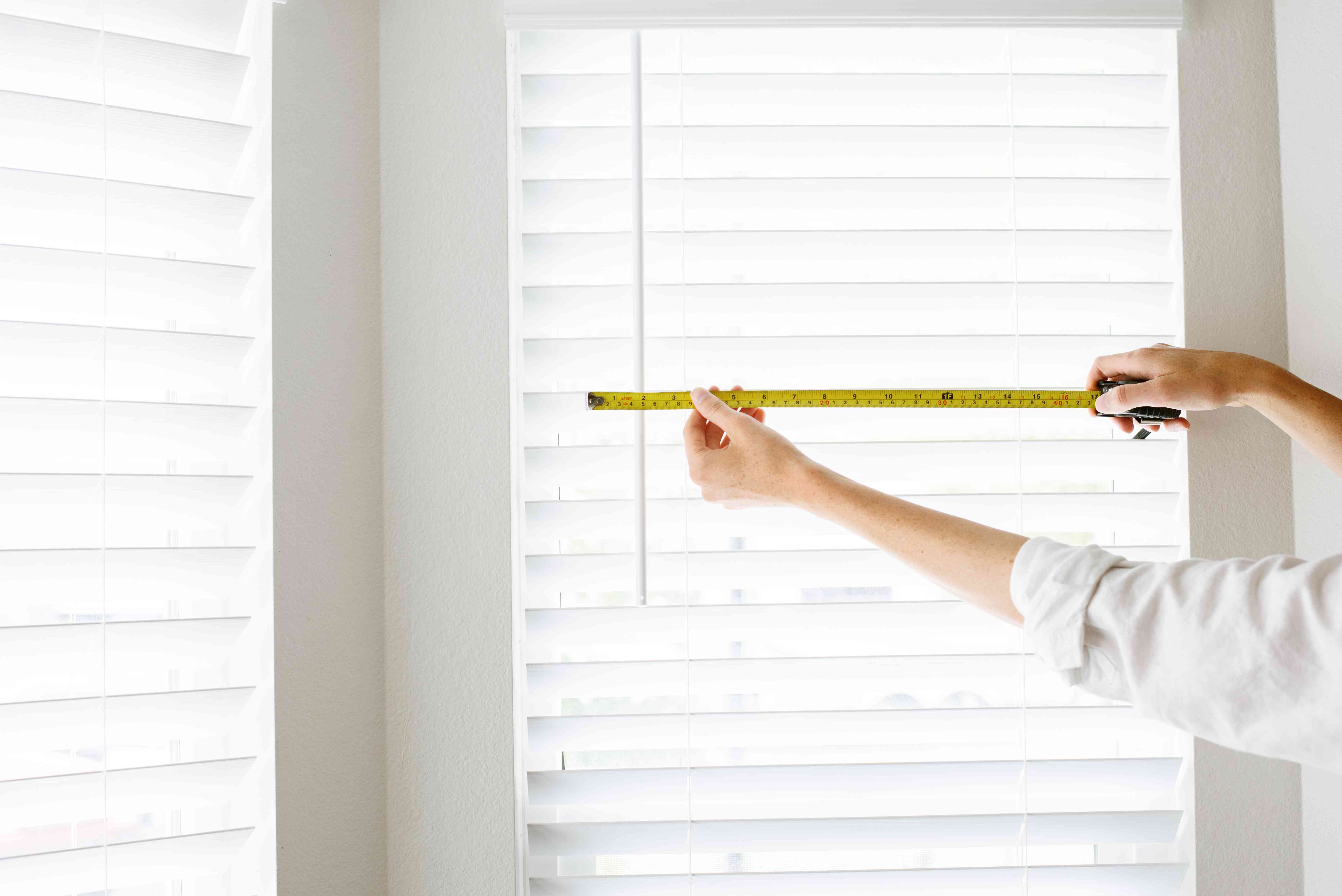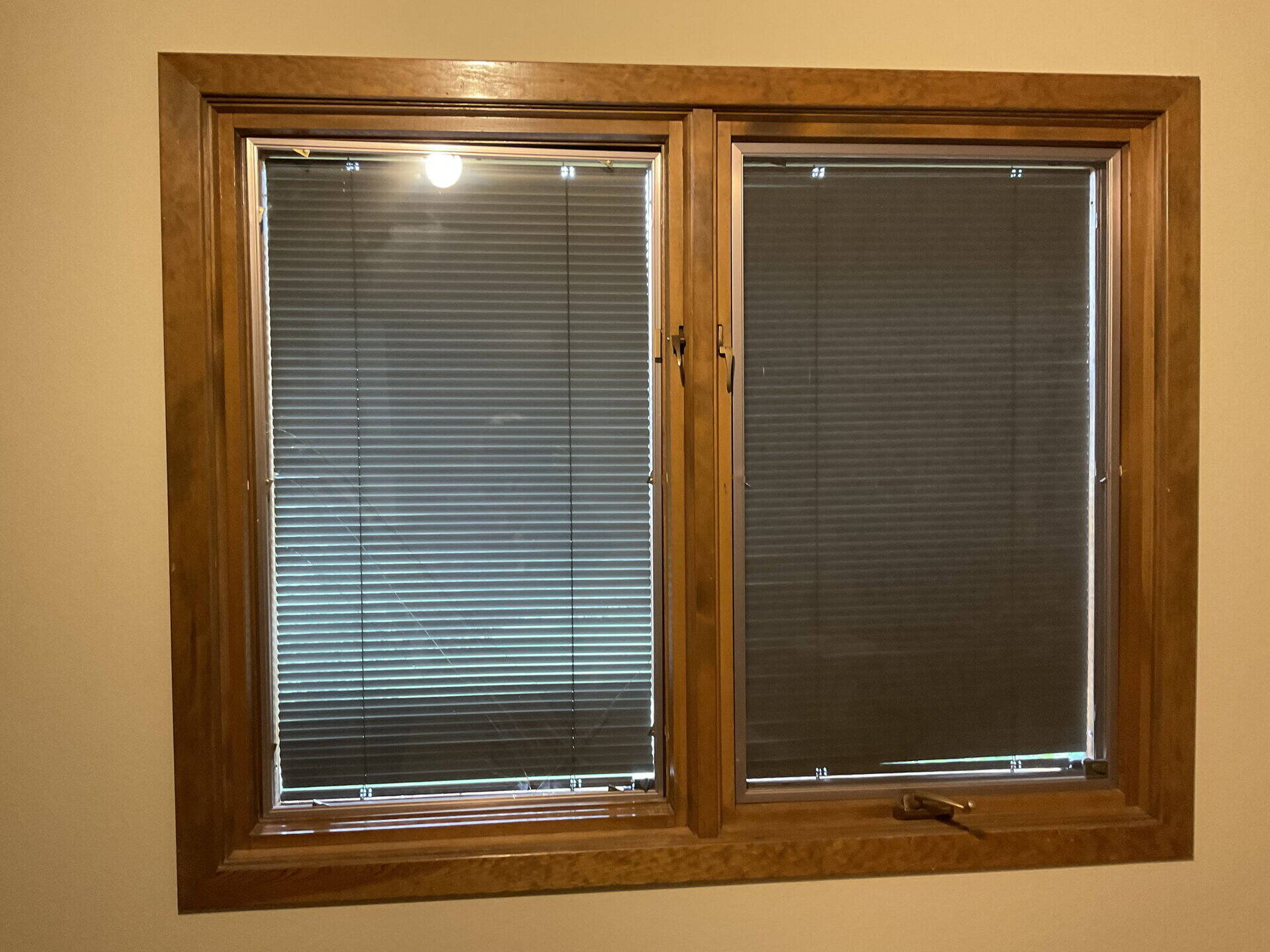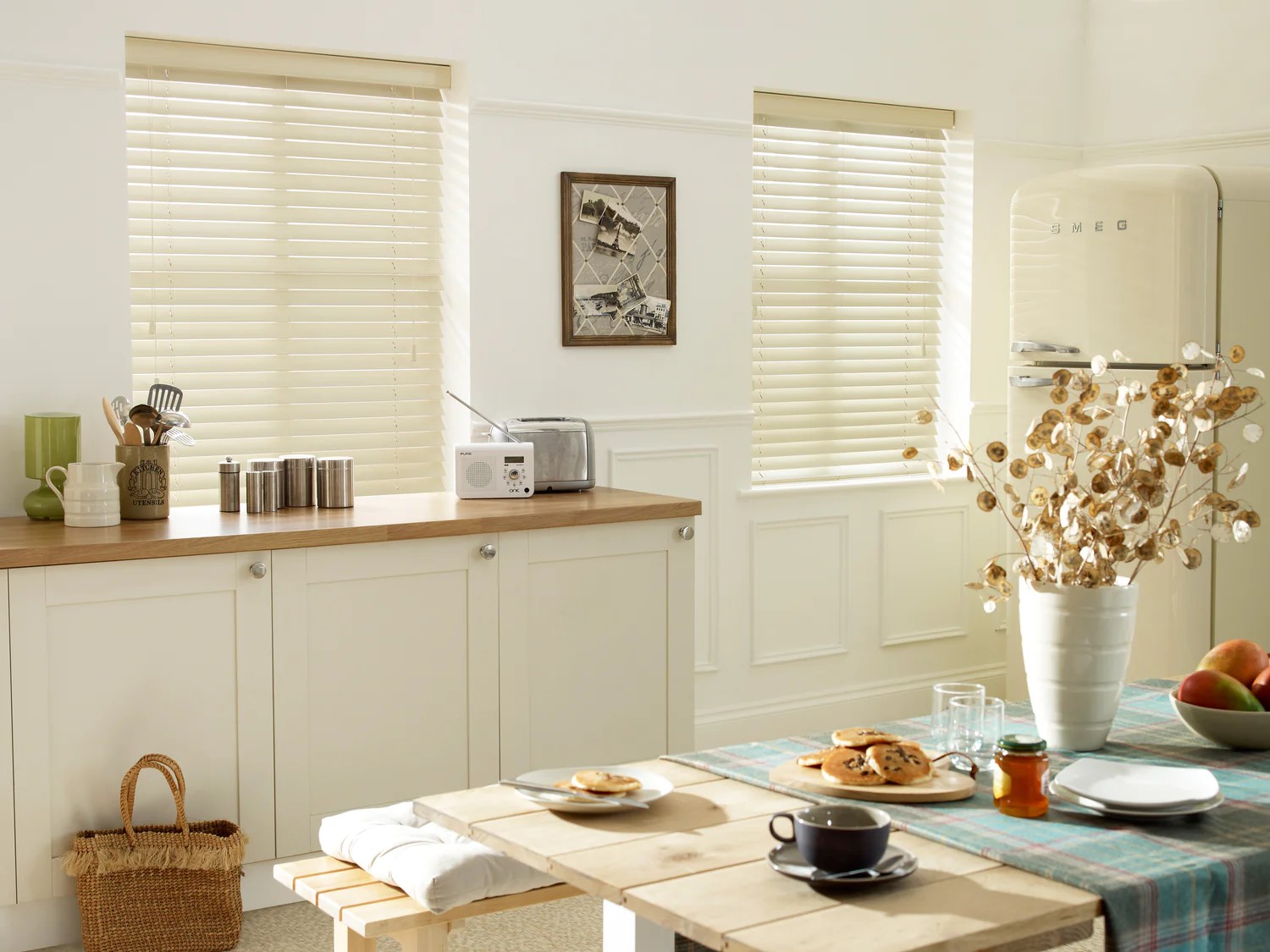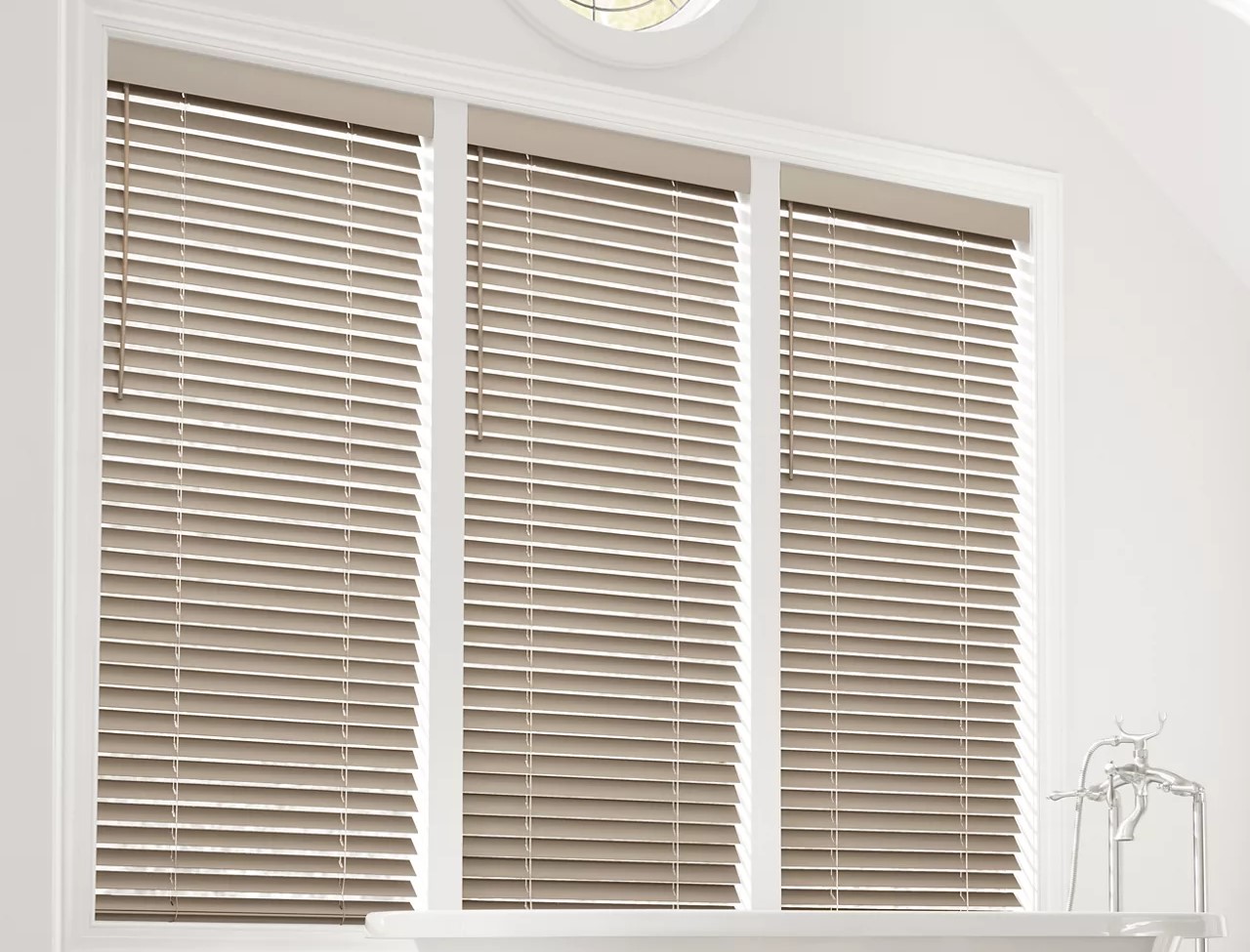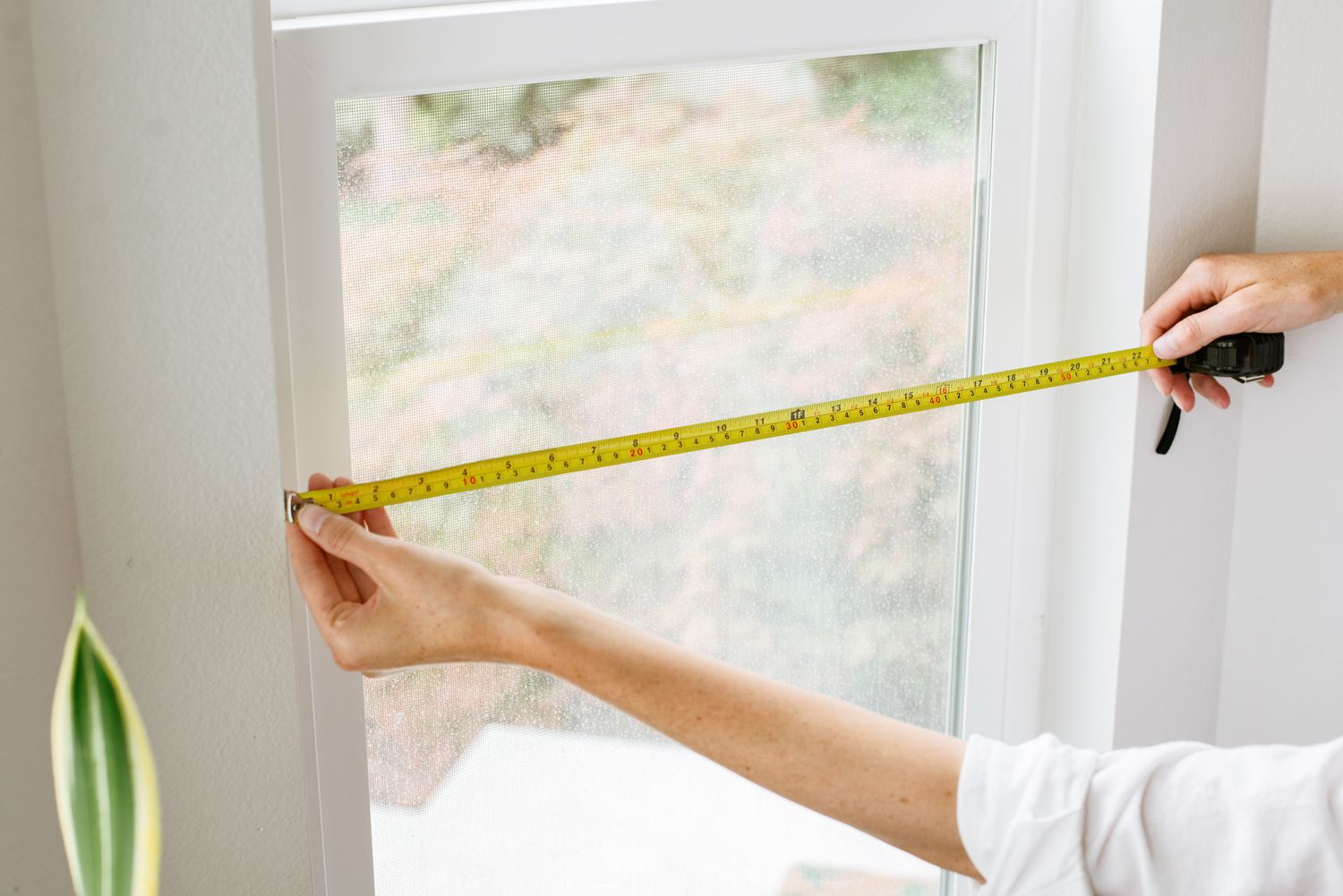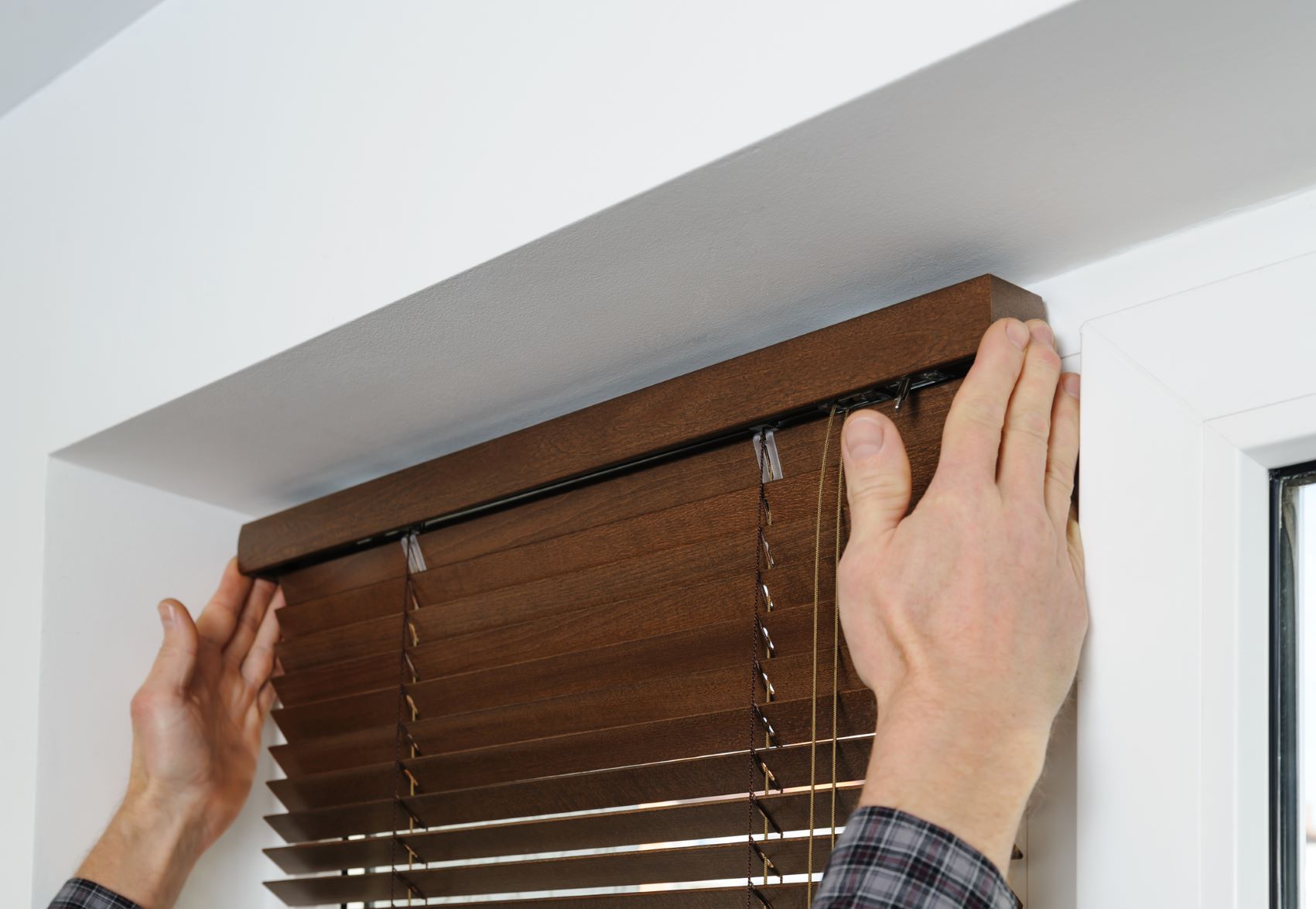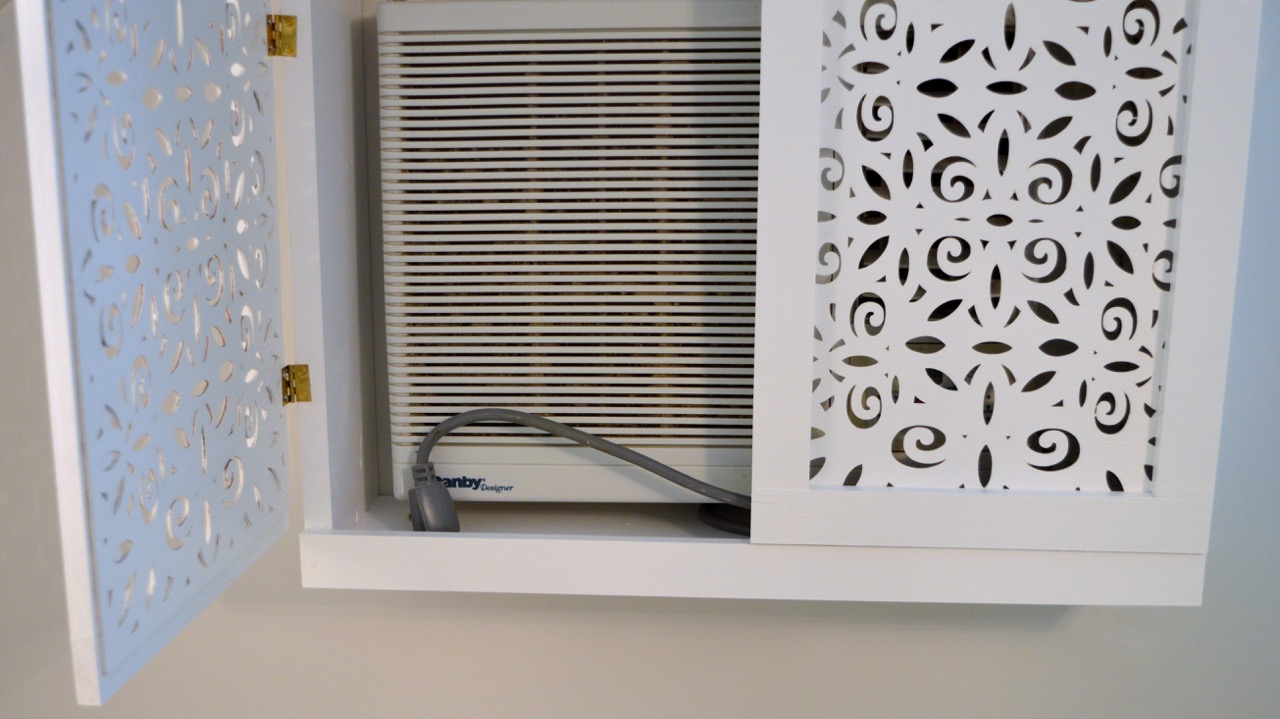Home>Articles>How Much Smaller Should Blinds Be Than The Window Inside Mount
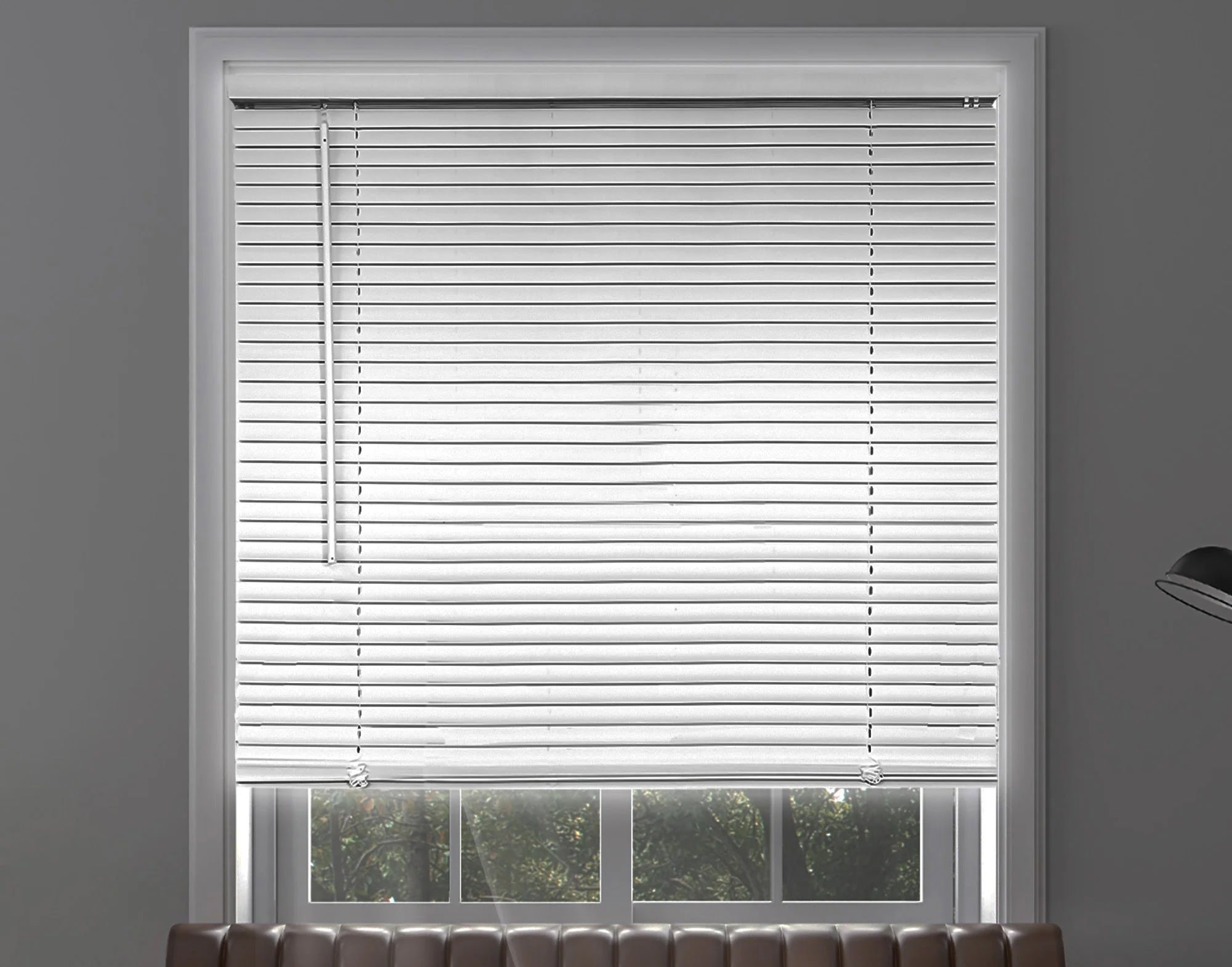

Articles
How Much Smaller Should Blinds Be Than The Window Inside Mount
Modified: October 18, 2024
Discover the ideal size for inside mount blinds compared to window dimensions. Read our informative articles for expert tips and guidance on achieving the perfect fit.
(Many of the links in this article redirect to a specific reviewed product. Your purchase of these products through affiliate links helps to generate commission for Storables.com, at no extra cost. Learn more)
Introduction
When it comes to window treatments, blinds are a popular choice for their sleek design, versatility, and light control capabilities. Many homeowners opt for inside mount blinds, which are installed inside the window frame, providing a seamless and tailored look to any space. One of the crucial factors to consider when choosing inside mount blinds is the size difference between the blinds and the window.
In this article, we will delve into the importance of determining the correct size difference between blinds and windows for inside mount installations. We’ll also explore suggestions and recommendations from industry experts to help you make an informed decision.
Understanding the concept and significance of inside mount blinds is essential. It involves installing blinds inside the window frame, between the window opening and the wall. This mounting style offers a clean and neat appearance as the blinds seamlessly fit within the window frame, making them an attractive option for many homeowners.
Factors such as window type, dimensions, and personal preference influence the choice between inside mount and outside mount blinds. Once you have decided on inside mounting, it is crucial to determine the appropriate size difference between the blinds and the window for a perfect fit.
Key Takeaways:
- Choosing the correct size for inside mount blinds is crucial for a seamless and visually appealing installation. Accurate measurements, industry recommendations, and professional guidance ensure a perfect fit, enhancing the functionality and aesthetics of your living space.
- The recommended size difference between blinds and the window for inside mount typically falls within a range of 1/4 to 1/2 inch in width and height. This allows for proper clearance, smooth operation, and a polished, streamlined appearance.
Understanding Inside Mount Blinds
Inside mount blinds, also known as recessed blinds or framed blinds, are installed inside the window frame. They provide a sleek and polished look, as they fit snugly within the window opening, exposing the window trim and maximizing the view. This mounting style is commonly used for windows that have sufficient depth for the blinds to fit securely.
Inside mount blinds offer numerous benefits. Firstly, they create a clean and streamlined appearance, enhancing the overall aesthetics of the window and the room. They also allow for more natural light to enter the space, as they cover only the window opening and not the surrounding wall or trim. Additionally, inside mount blinds offer a space-saving solution, ideal for rooms with limited wall space.
It is important to note that inside mount blinds require accurate measurements to ensure a proper fit. Every window is unique, and slight variations can impact the installation and functionality of the blinds. Therefore, precise measurements are crucial for a seamless blend and optimal performance.
Inside mount blinds can be installed on various window types, including casement, double-hung, and picture windows. However, it is imperative to consider the depth of the window frame when opting for this mounting style. The depth should be sufficient to accommodate the blinds, allowing them to be raised and lowered without any obstructions.
The material, style, and slat size of the blinds also play a role in determining the suitability for inside mount installation. Lightweight and thin materials, such as aluminum or faux wood, are commonly used for inside mount blinds. These materials offer flexibility and ease of installation, ensuring a proper fit within the window frame.
Factors to Consider When Choosing Inside Mount Blinds
Choosing the right inside mount blinds involves considering several important factors to ensure a perfect fit and optimal functionality. Let’s explore these factors in detail:
- Window Measurements: Accurate measurements of the window width and height are crucial when selecting inside mount blinds. Take precise measurements of the inside width of the window frame at the top, middle, and bottom, and the height from the top of the frame to the windowsill. These measurements will help determine the appropriate size for the blinds.
- Window Depth: The depth of the window frame should also be taken into account. Measure the depth from the front edge of the frame to the deepest point at the back. This measurement will ensure that the blinds can be fully recessed within the frame without any obstructions.
- Fabric and Material: Consider the type of fabric or material you prefer for your inside mount blinds. Some fabrics may require more space and may not be suitable for windows with limited depth. Choose a lightweight and flexible material that can easily fit within the frame.
- Slat Size: The slat size of the blinds is another factor to consider. Larger slats may require more space within the window frame. If you have limited depth, opt for smaller slats to ensure a proper fit.
- Operating Mechanism: Consider the operating mechanism of the blinds, such as corded, cordless, or motorized. Ensure that the operating mechanism is compatible with the available space within the window frame, allowing for smooth movement and functionality.
- Visual Aesthetics: Inside mount blinds offer a sleek and streamlined look. Consider the overall visual aesthetics of the room and choose blinds that complement the existing décor and architecture. Take into account the color, pattern, and design of the blinds to create a cohesive and visually appealing space.
- Additional Features: Think about any additional features you may require, such as blackout capabilities, privacy options, or UV protection. These features can impact the thickness and size of the blinds and should be considered when determining the proper fit.
By considering these factors, you can make an informed decision and choose inside mount blinds that best suit your window dimensions, style preferences, and functional needs. Taking accurate measurements and consulting with experts can help ensure a seamless installation and a visually pleasing end result.
Determining the Size Difference between Blinds and Window for Inside Mount
When it comes to inside mount blinds, determining the correct size difference between the blinds and the window is crucial for a proper and seamless installation. The size difference ensures that the blinds fit snugly within the window frame without any gaps or overlap. Here’s how you can determine the appropriate size difference:
1. Measure the Inside Width of the Window Frame: Using a measuring tape, measure the inside width of the window frame at the top, middle, and bottom. Ensure that the blinds will fit within the narrowest width to avoid any obstructions or difficulty in installation.
2. Deduct the Necessary Clearance: After measuring the inside width of the window frame, deduct the necessary clearance from the total width to allow for smooth and unobstructed movement of the blinds. The recommended clearance is typically around 1/4 to 1/2 inch on each side. This clearance ensures that the blinds can be easily raised and lowered without rubbing against the frame.
3. Measure the Inside Height of the Window Frame: Next, measure the inside height of the window frame from the top to the bottom. Just like with the width, be sure to measure at multiple points to accommodate any inconsistencies in the window frame.
4. Deduct the Necessary Clearance: Similar to the width measurement, deduct the necessary clearance from the total height to allow the blinds to fit properly within the frame. This clearance is typically around 1/4 to 1/2 inch, ensuring that the blinds do not scrape against the window sill or obstruct the window opening.
5. Consider the Depth of the Window Frame: In addition to width and height, take into consideration the depth of the window frame. Ensure that the blinds can fit within the depth of the frame, allowing for smooth operation and a neat appearance.
By following these steps and taking accurate measurements, you can determine the appropriate size difference between the blinds and the window for inside mount installation. It’s important to note that these measurements will vary depending on the type of blinds, the window frame, and personal preferences. Consulting with a professional or referring to manufacturer guidelines can provide additional insights and recommendations for determining the size difference.
Remember, precision is key when it comes to inside mount blinds. Taking the time to measure accurately will result in a seamless, well-fitted installation that enhances the overall look and functionality of your windows.
Industry Recommendations for Sizing Inside Mount Blinds
When it comes to sizing inside mount blinds, industry experts have provided recommendations and guidelines to ensure a proper fit and optimal functionality. These recommendations are based on years of experience and knowledge in the window treatment industry. Here are some industry-recommended practices for sizing inside mount blinds:
1. Allow for Proper Clearance: To ensure smooth operation and prevent any obstructions, it is recommended to deduct around 1/4 to 1/2 inch from both the width and height measurements. This allowance provides the necessary clearance for the blinds to move up and down without rubbing against the window frame or obstructing the window opening.
2. Consider Natural Variations: It’s important to measure the width and height of the window frame at multiple points, including the top, middle, and bottom. Natural variations may exist in the window frame, and taking multiple measurements will help you determine the narrowest width and the proper height for a consistent fit throughout.
3. Follow Manufacturer Guidelines: Different manufacturers may provide specific guidelines and recommendations for sizing their blinds. It’s essential to follow these guidelines to ensure compatibility and a proper fit. Manufacturers often provide instructions on how to measure windows accurately and may offer additional recommendations based on specific blind models and materials.
4. Consider the Operating Mechanism: The type of operating mechanism chosen for the blinds should also be taken into account when sizing inside mount blinds. Corded, cordless, or motorized blinds may require additional space for installation and operation. Make sure to consider the space needed for the chosen operating mechanism to ensure a smooth and hassle-free experience.
5. Seek Professional Advice: If you’re unsure about measuring or selecting the right size for your inside mount blinds, don’t hesitate to seek professional advice. Window treatment specialists or professional installers can provide expert guidance on measuring, sizing, and choosing the appropriate blinds for your specific window dimensions and requirements.
By following these industry recommendations, you can ensure that your inside mount blinds fit properly, operate smoothly, and enhance the overall aesthetics of your windows. Taking accurate measurements, allowing for proper clearance, and consulting with professionals will help you achieve the best possible results.
It’s worth noting that these recommendations may vary slightly depending on the specific blind manufacturer and the style of blinds being used. Always refer to the manufacturer’s instructions and guidelines for the most accurate and up-to-date information for your chosen blinds.
When measuring for inside mount blinds, subtract 1/4 inch from the window width to ensure a proper fit. This allows for smooth operation and prevents the blinds from rubbing against the window frame.
Read more: How To Install Honeycomb Blinds Inside Mount
How Much Smaller Should Blinds Be than the Window?
When it comes to sizing inside mount blinds, a common question that arises is how much smaller the blinds should be compared to the window. While there is no one-size-fits-all answer, there are general guidelines to follow to ensure a proper fit and a seamless installation. The recommended size difference between blinds and the window typically falls within a range of 1/4 to 1/2 inch, both in width and height.
The reason for this size difference is to allow for proper clearance and functionality. By deducting a small amount from the window measurements, you create space for the blinds to move up and down without rubbing against the window frame or interfering with the window opening. This clearance also prevents the blinds from overlapping the window frame, ensuring a neat and streamlined appearance.
When determining the exact size difference, keep in mind that measurements should be taken at multiple points within the window frame. This helps account for any variations or irregularities in the frame, ensuring a consistent fit throughout. It’s advisable to measure the width and height of the window at the top, middle, and bottom.
It’s important to note that the recommended size difference may vary depending on the specific blinds, window frame, and personal preference. Some window treatment manufacturers may provide specific recommendations based on their product, so it’s always a good idea to consult their guidelines for the most accurate information.
Additionally, the type of operating mechanism chosen for the blinds may impact the required size difference. Corded or cordless blinds, for example, may have different clearance requirements. Consider the space needed for the chosen operating mechanism to ensure smooth and unobstructed operation.
Lastly, it’s worth mentioning that seeking professional advice can be beneficial if you’re unsure about measuring or selecting the right size for your blinds. Window treatment specialists or professional installers can provide expert guidance based on your specific window dimensions and requirements.
Taking accurate measurements, allowing for proper clearance, and following industry recommendations will help ensure that your inside mount blinds fit properly, operate smoothly, and enhance the overall aesthetics of your windows. By striking the right balance between the size of the blinds and the window, you can achieve a seamless and visually pleasing installation.
Benefits of Choosing the Correct Size for Inside Mount Blinds
Choosing the correct size for inside mount blinds is essential for a variety of reasons. It not only ensures a proper fit and seamless installation but also offers several benefits that enhance the functionality and aesthetics of your windows and living space. Here are some key benefits of choosing the correct size for inside mount blinds:
- Neat and Streamlined Appearance: By selecting the right size blinds, you can achieve a clean and polished look. The blinds will fit snugly within the window frame, creating a seamless and tailored appearance that enhances the overall aesthetics of the room.
- Enhanced Light Control: Properly sized inside mount blinds provide optimal light control. They cover only the window opening, allowing you to adjust the amount of light entering the room. With the correct fit, you can effectively block out unwanted light, increase privacy, and create a comfortable and cozy atmosphere.
- Maximized View: Inside mount blinds are designed to fit within the window frame, without covering the surrounding wall or trim. By choosing the correct size, you can maximize the view outside and enjoy unobstructed sightlines from your windows.
- Smooth and Easy Operation: When inside mount blinds are the perfect size for the window, they operate smoothly and effortlessly. They can be raised and lowered without any obstructions, jamming, or rubbing against the window frame. This ensures a hassle-free experience and longevity of the blinds.
- Space Saving: Inside mount blinds are an ideal choice for rooms with limited wall space. By selecting the correct size, you can effectively utilize the available window area without encroaching on valuable wall space. This allows for more flexibility in furniture placement and overall room design.
- Reduced Energy Consumption: Properly fitted inside mount blinds contribute to energy efficiency. They create a barrier against drafts and help insulate the window, reducing heat loss during winter months and heat gain during summer. By effectively managing the temperature inside your home, you can potentially reduce energy consumption and lower utility bills.
- Increase in Property Value: Choosing the correct size for inside mount blinds improves the overall appeal of your windows and living space. This attention to detail and quality can enhance the value of your property if you ever decide to sell or rent it out.
By selecting the right size for inside mount blinds, you can enjoy these benefits and create a comfortable, visually appealing, and functional environment in your home. Taking accurate measurements, following industry guidelines, and consulting with professionals will help you achieve the desired results and make the most out of your window treatments.
Potential Issues with Incorrectly Sized Inside Mount Blinds
Choosing the correct size for inside mount blinds is crucial to ensure a proper fit and optimal functionality. Incorrectly sized blinds can lead to a range of issues that can affect the overall appearance, functionality, and performance of your window treatments. Here are some potential issues that can arise with incorrectly sized inside mount blinds:
- Gaps and Overlaps: Blinds that are too small for the window can leave gaps along the edges, allowing light to seep in and compromising privacy. On the other hand, blinds that are too large may overlap the window frame, creating a cluttered and messy appearance. Both gaps and overlaps can detract from the overall aesthetics of the window and the room.
- Difficulty in Installation: Incorrectly sized blinds can be challenging to install. If the blinds are too wide or too tall for the window frame, they may not fit properly, making the installation process complicated and time-consuming.
- Restricted Movement: Blinds that are too large may obstruct the window opening or scrape against the window sill when raised or lowered. This restricted movement can make it difficult to adjust the blinds to the desired position and may even cause damage to the blinds or the window trim.
- Uneven Appearance: Mismatched blinds can result in an uneven appearance, especially if the windows in the same room have different size differences. This inconsistency can be visually jarring and disrupt the overall harmony and cohesion of the space.
- Compromised Light Control: Incorrectly sized blinds can affect the effectiveness of light control in the room. Gaps and overlaps can allow unwanted light to enter, compromising privacy and reducing the ability to block out sunlight or achieve desired levels of darkness.
- Functional Limitations: Blinds that are not properly sized may not function optimally. They may get stuck, jammed, or require excessive force to operate. These functional limitations can be frustrating and may shorten the lifespan of the blinds.
- Negative Impact on Energy Efficiency: Ill-fitted blinds may not provide adequate insulation, allowing drafts to enter or escape through gaps. This compromises the energy efficiency of the window, leading to potential heat loss during cold months and heat gain during warm months, resulting in increased energy consumption and higher utility bills.
By understanding the potential issues that can arise with incorrectly sized inside mount blinds, you can see the importance of taking accurate measurements and choosing the right size for your window treatments. It’s always recommended to consult with professionals or refer to manufacturer guidelines to ensure a proper fit and avoid these potential issues.
Investing time in measuring accurately and selecting the appropriate size will not only enhance the appearance and functionality of your blinds but also prolong their lifespan and contribute to an overall aesthetically pleasing and enjoyable living space.
Tips for Accurately Measuring Windows for Inside Mount Blinds
Accurate measurements are crucial when it comes to sizing inside mount blinds. Taking precise measurements ensures a proper fit and seamless installation. To help you measure your windows accurately, here are some helpful tips:
- Use a Metal Tape Measure: Use a metal tape measure instead of a cloth or plastic one. Metal tape measures provide more accurate measurements, ensuring precision when sizing your windows.
- Measure at Multiple Points: Measure the width and height of the window at multiple points, including the top, middle, and bottom. This accounts for any variations or irregularities in the window frame, helping you achieve a consistent fit throughout.
- Record Measurements to the Nearest 1/8 inch: Be sure to record your measurements to the nearest 1/8 inch. This level of precision will help you select the right size blinds and avoid any issues with fit or functionality.
- Measure the Inside Width: Measure the inside width of the window frame at the top, middle, and bottom. Record the narrowest width measurement to ensure the blinds fit properly without any obstruction.
- Measure the Inside Height: Measure the inside height of the window frame from the top to the bottom. Take measurements on both sides of the window and record the shortest height measurement to ensure the blinds do not scrape against the windowsill.
- Consider the Window Depth: Measure the depth of the window frame to ensure that it can accommodate the blinds without any interference. This measurement is especially important if you’re going for a specific type or style of blinds with additional depth requirements.
- Check for Obstructions: Take note of any obstructions, such as handles or hardware, that may interfere with the operation or installation of the blinds. Make sure to account for these obstructions and adjust your measurements accordingly.
- Consult Manufacturer Guidelines: Refer to the manufacturer’s guidelines for any specific measurement instructions or recommendations related to their blinds. Different blinds may have slightly different sizing requirements, so it’s always a good idea to consult the experts.
- Consider Professional Assistance: If you’re unsure about measuring or want to ensure accurate measurements, consider seeking professional assistance. Window treatment specialists or professional installers can provide expert guidance and ensure that your window measurements are accurate and reliable.
By following these tips, you can accurately measure your windows for inside mount blinds. Remember to be precise, record measurements carefully, and consider any specific recommendations from the manufacturer. Accurate measurements will ensure a proper fit, allowing you to enjoy the benefits of stylish and functional inside mount blinds in your home.
Read more: How To Install Zebra Blinds Inside Mount
Conclusion
Choosing the correct size for inside mount blinds is essential for a seamless and visually appealing window treatment installation. By accurately measuring your windows and following industry recommendations, you can ensure a proper fit, optimal functionality, and enhanced aesthetics for your living space.
Inside mount blinds offer numerous benefits, including a neat and streamlined appearance, enhanced light control, and maximized views. They also save space, contribute to energy efficiency, and can increase the value of your property. However, incorrectly sized blinds can lead to a range of issues, such as gaps, overlaps, difficulty in installation, and compromised functionality.
To measure your windows accurately, use a metal tape measure and record measurements to the nearest 1/8 inch. Measure the inside width and height of the window frame at multiple points, and consider the depth of the frame. Take note of any obstructions and consult manufacturer guidelines for specific instructions. Seeking professional assistance is also an option if you need further guidance or reassurance.
By selecting the correct size for inside mount blinds, you can achieve a visually pleasing and functional window treatment. The blinds will fit snugly within the window frame, allowing for smooth operation, privacy, and light control. With accurate measurements, you can avoid potential issues and enjoy the full benefits of your inside mount blinds.
Remember, inside mount blinds are not a one-size-fits-all solution, and each window is unique. Taking the time to measure accurately and consider factors such as window type, material, and operating mechanism will result in a seamless and well-fitted installation that enhances the overall look and functionality of your windows.
So, whether you’re looking to update the window treatments in your home or are in the process of building a new space, be sure to measure carefully and select the correct size for your inside mount blinds. The investment of time and attention to detail will be well worth it, as you enjoy the benefits of beautiful and perfectly fitted window treatments that transform your living environment.
Frequently Asked Questions about How Much Smaller Should Blinds Be Than The Window Inside Mount
Was this page helpful?
At Storables.com, we guarantee accurate and reliable information. Our content, validated by Expert Board Contributors, is crafted following stringent Editorial Policies. We're committed to providing you with well-researched, expert-backed insights for all your informational needs.

